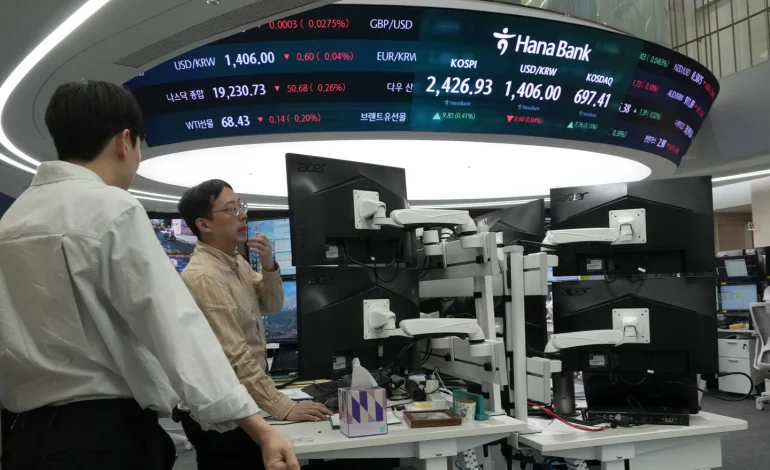World markets exhibited mixed reactions Thursday, as European stocks advanced while Asian markets saw declines, the Associated Press reports.
This fluctuation follows the release of US inflation data, which largely met expectations and prompted hopes of another interest rate cut from the Federal Reserve next month. The dollar continued to strengthen, impacting currencies and economies globally, particularly in Asia.
In Europe, shares climbed in early trading, driven by optimism over the US inflation report. Germany’s DAX surged 1.2% to 19,223.90, while France’s CAC 40 rose 0.8% to 7,274.79, and Britain’s FTSE 100 edged up 0.1% to 8,042.07. Futures in the US also looked positive, with contracts for both the S&P 500 and the Dow Jones Industrial Average up 0.2%.
In contrast, Asian markets saw losses. Japan’s Nikkei 225 index slipped 0.5% to 38,535.70, and China’s major indices tumbled, with the Hang Seng in Hong Kong dropping 2% to 19,435.95 and the Shanghai Composite down 1.7% to 3,379.84. Markets in Bangkok, Taiwan, and India also registered losses.
The dollar gained against the Japanese yen, trading at 156.10 yen compared to 155.49 yen the previous day. This increase in the dollar’s value is linked to expectations of economic policies under the incoming Trump administration, including lower tax rates and increased tariffs, which have buoyed the greenback but raised concerns among Asian economies.
“For Asia, particularly those economies closely linked to China, the dollar’s dominance is poised to become an economic wrecking ball,” commented Stephen Innes of Capital Economics.
The Thai baht, Chinese yuan, and other regional currencies have weakened as the dollar strengthens, putting strain on economies with high levels of US-denominated debt.
On Wednesday, US stocks ended with mixed results. The S&P 500 slipped slightly, down 0.1%, while the Dow Jones Industrial Average rose by 0.1% and the Nasdaq Composite dropped 0.3%. US inflation in October accelerated to 2.6%, up from 2.4% the previous month, but core inflation, which is closely watched as a predictor of future trends, remained steady. This steadiness fueled hopes that the Federal Reserve may cut interest rates again next month, a move traders estimate has an 80% likelihood.
The Federal Reserve has already reduced rates twice in recent months after holding them at a two-decade high, aiming to maintain stability in the job market and curb inflation. President-elect Trump’s proposed policies, including tax cuts and regulatory rollbacks, are expected to boost economic growth but could also lead to increased inflation and government debt.
The cryptocurrency market has experienced strong momentum, with Bitcoin trading at $91,590 after briefly surpassing $93,000. Trump’s administration has embraced cryptocurrency development, with pledges to make the US a global hub for crypto, which may be contributing to investor enthusiasm.
Meanwhile, oil prices showed little movement early Thursday. US benchmark crude oil traded at $68.34 per barrel, down 9 cents, and Brent crude, the international standard, dipped 2 cents to $72.26 per barrel.
The euro weakened against the dollar, falling to $1.0513 from $1.0587, further reflecting the dollar’s upward trajectory.









